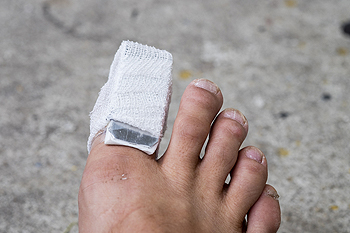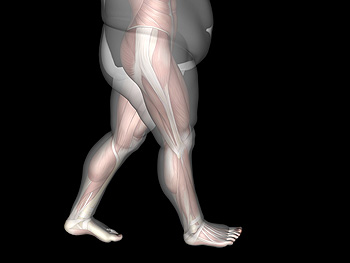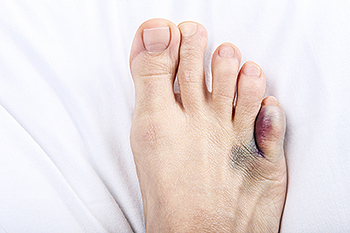Items filtered by date: January 2025
We Can Treat Your Foot or Ankle Pain
Foot Problems From Pickleball

Pickleball’s rapid rise in popularity brings undeniable benefits, but no sport is risk-free. Players are always at risk for foot and ankle fractures, often from diving or a misstep due to inexperience or improper technique. Many injuries stem from not learning the game’s nuances or practicing safe play. Additionally, the physical demands can worsen pre-existing conditions like arthritis, leading to increased pain and reduced joint function. Learning to fall safely, such as rolling instead of landing on outstretched limbs, can reduce the severity of injuries. Preventative measures, including wearing proper footwear, strengthening lower extremities, and understanding game strategy are vital. For players managing arthritis, adjusting activity levels and consulting with a podiatrist for joint care can help. If fractures or worsening arthritis occur while playing pickleball, it is suggested that you seek expert treatment from a podiatrist.
Sports related foot and ankle injuries require proper treatment before players can go back to their regular routines. For more information, contact Lance Greiff, DPM of Great Neck Podiatry. Our doctor can provide the care you need to keep you pain-free and on your feet.
Sports Related Foot and Ankle Injuries
Foot and ankle injuries are a common occurrence when it comes to athletes of any sport. While many athletes dismiss the initial aches and pains, the truth is that ignoring potential foot and ankle injuries can lead to serious problems. As athletes continue to place pressure and strain the area further, a mild injury can turn into something as serious as a rupture and may lead to a permanent disability. There are many factors that contribute to sports related foot and ankle injuries, which include failure to warm up properly, not providing support or wearing bad footwear. Common injuries and conditions athletes face, including:
- Plantar Fasciitis
- Achilles Tendinitis
- Achilles Tendon Rupture
- Ankle Sprains
Sports related injuries are commonly treated using the RICE method. This includes rest, applying ice to the injured area, compression and elevating the ankle. More serious sprains and injuries may require surgery, which could include arthroscopic and reconstructive surgery. Rehabilitation and therapy may also be required in order to get any recovering athlete to become fully functional again. Any unusual aches and pains an athlete sustains must be evaluated by a licensed, reputable medical professional.
If you have any questions please contact our offices located in Great Neck Bronx, NY . We offer the newest diagnostic and treatment technologies for all your foot and ankle needs.
Managing a Broken Toe

A broken toe occurs when the bones in the toe fracture due to trauma, such as stubbing it forcefully or dropping a heavy object on the foot. Symptoms of a broken toe include sharp, throbbing pain, swelling, bruising, and difficulty walking or bearing weight. Severe injuries may cause the toe to appear dislocated or sit at an unnatural angle. While it can be difficult to distinguish a break from a sprain, pain localized at the fracture site and significant bruising are common signs of a break. A podiatrist can accurately diagnose the injury, often using X-rays, and provide treatment to support proper healing. This may involve stabilizing the toe through techniques like buddy taping or using specialized footwear to limit movement. In severe cases, a podiatrist may recommend surgery to realign the bones and prevent long-term complications, such as arthritis or chronic pain. If you have a broken toe, it is suggested that you promptly schedule an appointment with a podiatrist for an exam and treatment.
Broken toes may cause a lot of pain and should be treated as soon as possible. If you have any concerns about your feet, contact Lance Greiff, DPM from Great Neck Podiatry. Our doctor will treat your foot and ankle needs.
What Is a Broken Toe?
A broken toe occurs when one or more of the toe bones of the foot are broken after an injury. Injuries such as stubbing your toe or dropping a heavy object on it may cause a toe fracture.
Symptoms of a Broken Toe
- Swelling
- Pain (with/without wearing shoes)
- Stiffness
- Nail Injury
Although the injured toe should be monitored daily, it is especially important to have a podiatrist look at your toe if you have severe symptoms. Some of these symptoms include worsening or new pain that is not relieved with medication, sores, redness, or open wounds near the toe.
If you have any questions please feel free to contact our offices located in Great Neck Bronx, NY . We offer the newest diagnostic tools and technology to treat your foot and ankle needs.
How Obesity Affects the Feet

Obesity can impact the foot and ankle due to the added weight and increased pressure. The excess weight can lead to joint strain and increased wear on the bones, particularly in the feet and ankles. Over time, this added stress can contribute to the development of arthritis, causing pain, swelling, and limited mobility. Musculoskeletal problems, such as tendonitis or plantar fasciitis, are also more common in individuals who are obese due to the constant pressure on the foot structures. Walking up a flight of stairs or on an incline can further worsen this pressure, increasing ankle stress by four to six times compared to walking on level ground. This added strain can accelerate joint deterioration and lead to more severe foot and ankle conditions, making it vital for individuals with obesity to manage their weight and seek proper care for their feet. If you are overweight and have foot or ankle pain, it is suggested that you consult a podiatrist for treatment.
Obesity has become very problematic at this point in time and can have extremely negative effects on the feet. If you’re an obese individual and are concerned about your feet, contact Lance Greiff, DPM from Great Neck Podiatry. Our doctor can provide the care you need to keep you pain-free and on your feet.
Obesity and Your Feet
Since your feet are what support your entire weight when standing, any additional weight can result in pain and swelling. Being overweight is one of the main contributors to foot complications.
Problems & Complications
Extra Weight – Even putting on just a few extra pounds could create serious complications for your feet. As your weight increases, your balance and body will shift, creating new stresses on your feet. This uneven weight distribution can cause pain, even while doing the simplest tasks, such as walking.
Diabetes – People who are overweight are at serious risk of developing type-2 diabetes, which has a drastic impact on the health of your feet. As you get older, your diabetes might worsen, which could lead to loss of feeling in your feet, sores, and bruises. You could also become more prone to various infections.
Plantar fasciitis – Pressure and stress that is placed on muscles, joints, and tendons can trigger plantar fasciitis, which is an inflammation of tissue that forms along the bottom of the foot.
If you have any questions, please feel free to contact our offices located in Great Neck Bronx, NY . We offer the newest diagnostic and treatment technologies for all your foot care needs.
Why Does My Pinky Toe Hurt?

Pinky toe pain can be caused by a variety of factors, often resulting from injury, pressure, or underlying medical conditions. One common cause is wearing tight or ill-fitting shoes, which put pressure on the pinky toe and lead to pain, blisters, or even bunions. Another potential cause is a stubbed toe or trauma to the foot, resulting in bruising or swelling. Conditions like hammertoe or gout can also lead to discomfort in the pinky toe, causing it to become stiff, inflamed, or deformed. Symptoms of pinky-toe pain include aching, swelling, redness, and difficulty moving the toe. In more severe cases, the toe may appear bruised, crooked, or misaligned. If the pain persists or worsens, it is suggested that you consult a podiatrist to determine the underlying cause and receive appropriate treatment to manage the symptoms and prevent further issues.
Toe pain can disrupt your daily activities. If you have any concerns, contact Lance Greiff, DPM of Great Neck Podiatry. Our doctor can provide the care you need to keep you pain-free and on your feet.
What Causes Toe Pain?
Most severe toe pain is caused due to a sports injury, trauma from dropping something heavy on the toe, or bumping into something rigid. Other problems can develop over time for various reasons.
Toe pain can be caused by one or more ailments. The most common include:
- Trauma
- Sports injury
- Wearing shoes that are too tight
- Arthritis
- Gout
- Corns and calluses
- Hammertoe
- Bunions
- Blisters
- Ingrown toenails
- Sprains
- Fractures (broken bones)
- Dislocations
When to See a Podiatrist
- Severe pain
- Persistent pain that lasts more than a week
- Signs of infection
- Continued swelling
- Pain that prevents walking
Diagnosis
In many cases the cause of toe pain is obvious, but in others, a podiatrist may want to use more advanced methods to determine the problem. These can range from simple visual inspections and sensation tests to X-rays and MRI scans. Prior medical history, family medical history, and any recent physical traumatic events will all be taken into consideration for a proper diagnosis.
Treatment
Treatments for toe pain and injuries vary and may include shoe inserts, padding, taping, medicines, injections, and in some cases, surgery. If you believe that you have broken a toe, please see a podiatrist as soon as possible.
If you have any questions please contact our offices located in Great Neck Bronx, NY . We offer the newest diagnostic and treatment technologies for all your foot and ankle needs.



